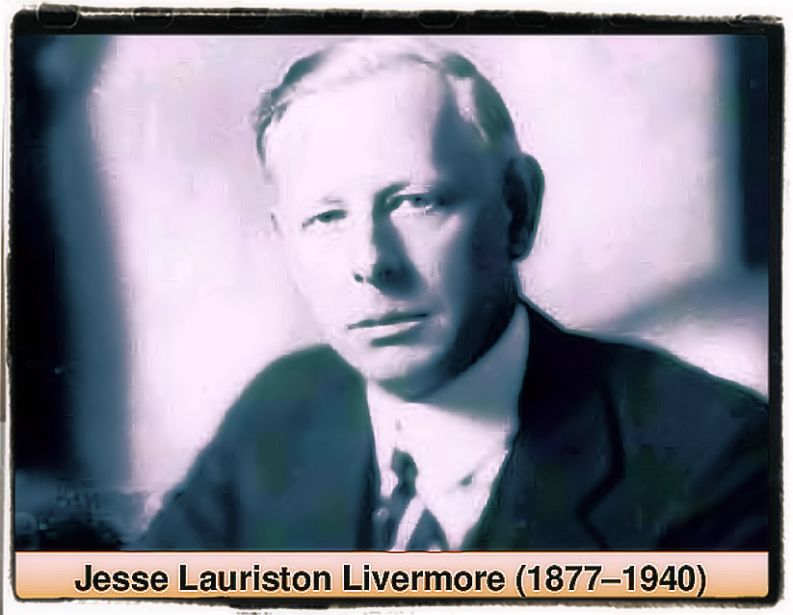
Trading tips and advice, some good lessons by very good and famous traders.
Price, risk management and emotional behavior
For Dennis and the turtles, price was the only information that mattered. Lessons also focused extensively on risk management and avoiding emotional behavior. The turtles were taught that losses must be cut short – to become attached to a trade is to court disaster. Conversely, profits should be allowed to run until the trend came to an end.
It was the basic outline of the philosophy that virtually all trend followers adhere to today (the long volatility profile which exchanges small but frequent losses for rare but much larger gains), but in the early 1980s, it was somewhat revolutionary – proving quite successful for the turtles. According to Covel, the Turtles were able to produce excellent returns, and Eckhardt was forced to concede that Dennis had been right – you could teach ordinary people the skills necessary to be successful traders. He’d lost the bet, but the stakes had never been the point (nor, indeed, could anyone say whether the bet had defined any stakes to begin with). They had in many ways laid the foundation for the adoption of systematic trend following amongst traders and asset managers.
The Turtles
Protective stops
I set protective stops at the same time I enter a trade. I normally move these stops in to lock in a profit as the trend continues. Sometimes, I take profits when a market gets wild. This usually doesn’t get me out any better than waiting for my stops to close in, but it does cut down on the volatility of the portfolio, which helps calm my nerves. Losing a position is aggravating, whereas losing your nerve is devastating. Before I enter a trade, I set stops at a point at which the chart sours.
ED Sykota
Making money with short term trading
Having a quote machine is like having a slot machine on your desk – you end up feeding it all day long. I get my price data after the close each day.
Day Trading is an exercise in limiting profits while continuing to pay normal transaction costs. Day trading may provide a way to cover up deep feelings that the trader does not wish to face.
Short Term Trading is one good way to realize your intention of reducing account equity.
Intraday trading is tough since the moves are not as big as for long-term trading and there is no comparable reduction in transaction cost. In general, short-term trading systems succumb to transaction costs and execution friction. You might simulate your system over historical data and notice how sensitive it is to assumptions about where you get your fills.
The shorter the term, the smaller the move. So profit potential decreases with trading frequency. Meanwhile, transaction costs stay the same. To compensate for profit roll-off, short-term traders have to be very good guessers. To improve guessing skills, you can practice dealing cards from a standard deck, one at a time. When you become very good at it you might be able to make money with short term trading.
ED Sykota

How to trade stocks
In How to Trade in Stocks, Jesse Livermore discussed “the folly of trying to find out a good reason why you should buy or sell a given stock.”
He wrote in the context of the behavior of U.S. stocks, whose four major sectors – including steel makers – had risen after World War 2 began. While other sectors continued to advance, U.S. steel stocks stopped rising.
Livermore wrote that there must have been a good reason why the steel stocks had stopped rising but he didn’t know what it was.
It was not until four months later that the public was given the facts and the action of the steel stocks – which had by now fallen 26 to 29 points – was finally explained. The British and Canadian governments had been selling large volumes of shares in U.S. steel makers. (Presumably to fund their war efforts.)
The Action of the Market Should be Reason Enough
“If you wait until you have the reason given, you will have missed the opportunity of acting at the proper time!
“The only reason an investor or speculator should ever want to have pointed out to him is the action of the market itself.
“Whenever the market does not act right or in the way it should – that is reason enough for you to change your opinion and change it immediately.
“Remember: there is always a reason for a stock acting the way it does.
“But also remember: the chances are that you will not become acquainted with that reason until some time in the future, when it is too late to act on it profitably.”
Jesse Livermore
To Average Down or Not?
In How to Trade in Stocks, Jesse Livermore wrote:
I have warned against averaging losses. That is a most common practice.
Great numbers of people will buy a stock, let us say at 50, and two or three days later if they can buy it at 47 they are seized with the urge to average down by buying another hundred shares, making a price of 48.5 on all.
Having bought at 50 and being concerned over a three-point loss on a hundred shares, what rhyme or reason is there in adding another hundred shares and having the worry double when the price hits 44?
At that point there would be a $600 loss on the first hundred shares and a $300 loss on the second hundred shares.
If one is to apply such an unsound principle, he should keep on averaging by buying two hundred shares at 44, then four hundred at 41, eight hundred at 38, sixteen hundred at 35, thirty-two hundred at 32, sixty-four hundred at 29 and so on.
How many speculators could stand such pressure?
So, at the risk of repetition and preaching, let me urge you to avoid averaging down… Why send good money after bad?
Keep that good money for another day. Risk it on something more attractive than an obviously losing deal.
Pyramiding
In practice, Jesse Livermore would have traded with the trend, against the “suckers” who were trying to average down.
Since the stock price was falling, he would have sold it short and, as the price continued to fall, he would have pyramided his position.
Every time the market moved in his favor, he would have bought a larger number of shares than he had bought the previous time.
His gains would be identical to the losses incurred by someone who was averaging down.
Comments
I use to average up and down but never below my initial stop loss and respecting my maximum position sizing level and all my criteria settings to be in.
Averaging is a natural instinct.What one needs to succeed is to go against the basic instinct.
Jesse Livermore
Hold Your Position Until the Trend is Invalidated, Do Not Let Go of Your Position. Be Willing to Experience Your Anxieties
Maintaining a commitment is particularly important when it comes up for a test.
Somewhere along the line of keeping your commitment you may get a feeling that you don’t like.
If you are willing to experience the feeling, it can transform into an AHA that supports your commitment.
If you are unwilling to experience the feeling, you might abandon your commitment to try to make the feeling go away. That only results in having to feel the feeling after all.
The more you are willing to experience the feeling of bumping into walls, the less you have to bump into walls.
Trading requires skill at reading the markets and at managing your own anxieties.
People have a Conscious Mind and Fred. Fred wants to communicate feelings to CM so CM can experience them and gain experience and share it with Fred so Fred can learn how to react. This is how we manufacture wisdom. When we don’t like our feelings we tie them in k-nots and do not experience them. This interrupts the wisdom manufacture process, and draws drama into our lives.
K-nots, protect us from truth and keep our lives in drama. To untie k-nots, fully experience whatever appears in the moment.
When you keep your eye on the prize and are willing to experience all the feelings that arise, the prize soon becomes yours.

Risk Below 5% of Equity Per Trade
I intend to risk below 5% on a trade, allowing for poor executions. Occasionally I have taken losses
above that amount when major news caused a thin market to jump through my stops.
Risk no more than you can afford to lose, and also risk enough so that a win is meaningful. If there is no such amount, don’t play.
Speculate with less than 10% of your liquid net worth. Risk less than 1% of your speculative account on a trade. This tends to keep the fluctuations in the trading account small, relative to net worth. This is essential as large fluctuations can engage Fred and lead to feeling-justifying drama.
Betting more boldly produces more volatility. Good traders are familiar with both and keep their trading well within their tolerances.
I use a rule of thumb that you place less than 10% of your liquid net worth at risk and that you stop your losses at 50% of that – so you have net exposure of 5% of your liquid net worth. If you have a net worth of 1.5 million, you might have liquid net worth (cash, stocks, bonds, etc) of, say, about 500,000 (a wild guess). Then you might place $50,000 of that at risk and cut your loss if you lose $25,000.
The idea is to keep the venture below your threshold of financial importance, so nominal ups and downs do not trigger your emotional uncle point and motivate you to abandon the venture during drawdowns.
ED Sykota
Do Not Shut Out or Ignore Your Fear
The positive intention of fear is risk control.
People who are unwilling to experience fear tend to take big risks and wind up in big drama in which the risk materializes.
People with poor risk control tend to bet heavy. So they tend to outperform others in good markets, and under-perform them in poor ones.
Risk is the uncertain possibility of loss. If you could quantify risk exactly, it would no longer be risk.
Risk control has to do with your willingness to allow your stop to do its job.
And last but not least always keep very well in mind that:
Risk comes from not knowing what you are doing;
Amateurs want to be right. Professionals want to make money;
Repetition breeds familiarity. Familiarity diminishes fear;
Being wrong is acceptable, but staying wrong is totally unacceptable;
Being wrong isn’t a choice, but staying wrong is;
Good judgment comes from experience and experience comes from bad judgment.
To find out more about trading and finance you can also read:

